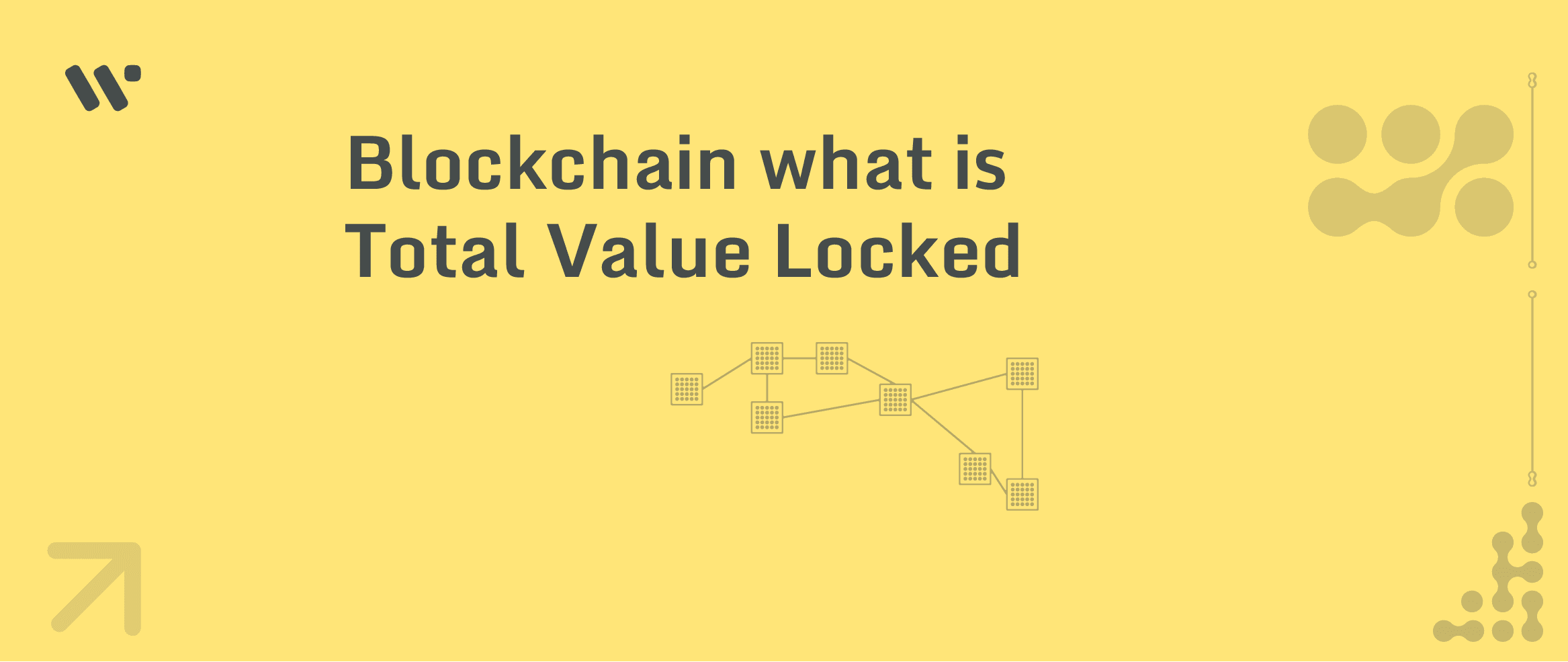Matthew Webb
Crypto TVL Understanding Total Value Locked in Decentralized Finance

Crypto TVL: Understanding Total Value Locked in Decentralized Finance
In the rapidly evolving world of cryptocurrency and blockchain technology, one metric has emerged as a crucial indicator of the health and growth of decentralized finance (DeFi) ecosystems: Total Value Locked, or TVL. This comprehensive guide will explore what TVL is, why it matters in DeFi, how it's calculated, and its implications for the broader crypto market.
What is Total Value Locked (TVL) in Crypto?
Total Value Locked, often abbreviated as TVL, is a metric used in the crypto sector to measure the overall value of crypto assets deposited in a DeFi protocol. In essence, it represents the sum of all assets that are currently being staked, lent, or used as collateral within a particular DeFi project or across the entire DeFi ecosystem.
TVL is typically expressed in US dollars, providing a standardized way to compare different projects and blockchains, regardless of their native tokens. It's a snapshot of the total value of assets locked on a specific DeFi platform or across multiple platforms at a given time.
Why TVL Matters in DeFi
Understanding why TVL matters is crucial for anyone involved in the crypto and DeFi space. Here are several reasons why TVL is an important metric:
1. Indicator of Trust and Adoption
A high TVL suggests that users trust the protocol enough to lock up their assets. It's a sign of adoption and confidence in the platform's security and potential returns.
2. Measure of Market Share
TVL helps in comparing the relative size and popularity of different DeFi projects. A project with a higher TVL often has a larger market share within the DeFi ecosystem, indicating robust decentralized applications.
3. Liquidity Gauge
TVL can indicate the amount of liquidity available in a protocol. Higher liquidity often leads to better rates for borrowing and lending, and more stable prices for token swaps.
4. Growth Metric
Tracking changes in TVL over time can provide insights into the growth or decline of a DeFi project or the entire DeFi sector.
5. Investment Signal
Investors often use TVL as one of the metrics to help determine if a DeFi asset is undervalued or overvalued when compared to its market capitalization.
How is Crypto TVL Calculated?
The calculation of TVL might seem straightforward, but it involves several nuances:
-
Asset Valuation: The value of locked assets is typically calculated in USD. This involves multiplying the quantity of each asset by its current market price.
-
Multi-chain Considerations: For projects that operate on multiple blockchains, TVL calculations need to account for the amount of assets locked across all supported chains.
-
Token Types: TVL includes various types of crypto assets, including cryptocurrencies, stablecoins, and sometimes even NFTs.
-
Double Counting: Care must be taken to avoid double-counting assets in interconnected protocols.
-
Real-time Updates: TVL is a dynamic metric that changes constantly as users deposit or withdraw assets and as asset prices fluctuate.
To obtain the TVL of a specific DeFi platform, you would typically:
- Identify all the assets locked in the platform
- Determine the quantity of each asset
- Multiply each asset's quantity by its current USD price
- Sum up the dollar value of all assets locked to determine the TVL
TVL in Different Contexts
DeFi Project TVL
For a single DeFi project, TVL represents the total value of assets locked in that specific protocol. This could include assets in lending pools, liquidity pools, staking contracts, and other DeFi mechanisms.
Blockchain TVL
When we talk about the TVL of a blockchain like Ethereum or Solana, we're referring to the sum of TVL across all DeFi projects built on that blockchain. This metric can help gauge the popularity and developer interest in a blockchain for DeFi applications.
Overall DeFi TVL
The total DeFi TVL represents the sum of assets locked across all DeFi projects on all blockchains. This gives a bird's-eye view of the entire DeFi ecosystem's size and growth.
Top Crypto Projects by TVL
As of 2024, some of the DeFi projects with the highest TVL include:
- Aave: A decentralized lending platform
- MakerDAO: A protocol for creating DAI stablecoin
- Curve Finance: An exchange liquidity pool on Ethereum
- Uniswap: A decentralized exchange protocol
However, these rankings can change rapidly, and it's always best to check real-time data on platforms like DeFiLlama for the most up-to-date information.
TVL vs. Market Cap: Understanding the Difference
While both TVL and market capitalization are important metrics in the crypto world, they measure different things:
- Market Cap: Represents the total value of a cryptocurrency in circulation. It's calculated by multiplying the current price of a token by its circulating supply.
- TVL: Represents the total value of assets locked in a DeFi protocol, regardless of the protocol's native token price or supply.
The ratio between a project's TVL and its market cap (known as the TVL ratio) can be a useful metric for assessing whether a project might be undervalued or overvalued.
Limitations and Criticisms of TVL
While TVL is a widely used metric, it's not without its limitations:
-
Price Volatility: Because TVL is usually measured in USD, it can fluctuate significantly due to crypto market volatility, even if the actual amount of locked assets remains stable.
-
Quality of Locked Assets: TVL doesn't differentiate between the types or quality of locked assets. A protocol with a high TVL of volatile assets might be less stable than one with a lower TVL of high-quality assets.
-
Manipulation: Some projects might attempt to artificially inflate their TVL through various means, such as offering unsustainable yields.
-
Overleveraging: A high TVL doesn't necessarily mean a project is financially healthy. Some protocols might be overleveraged, putting user funds at risk.
-
Cross-chain Complexity: As DeFi expands across multiple blockchains, accurately calculating and comparing TVL becomes more challenging.
The Future of TVL in the Crypto Ecosystem
As the DeFi sector continues to evolve, so too will the role and calculation of TVL. Here are some trends to watch:
-
Cross-chain DeFi: As more projects span multiple blockchains, TVL calculations will need to become more sophisticated to accurately represent value locked across different networks.
-
Integration of NFTs and Metaverse Assets: With the rise of NFTs and metaverse projects, TVL calculations may expand to include these digital assets.
-
Improved Data Accuracy: Efforts are ongoing to create more standardized and accurate methods of calculating TVL across different projects and chains.
-
New Metrics: While TVL remains important, the industry is developing new metrics to provide a more holistic view of DeFi project health and user engagement.
-
Regulatory Considerations: As DeFi attracts more attention from regulators, TVL could become one of the metrics used to assess the size and impact of DeFi protocols.
Conclusion: The Importance of TVL in the DeFi Landscape
Total Value Locked has emerged as a critical metric in the world of decentralized finance. It provides valuable insights into the health, growth, and adoption of DeFi projects and the broader DeFi ecosystem. For investors, developers, and users alike, understanding TVL can help inform investment decisions, gauge the popularity of different platforms, and assess the overall state of the DeFi market.
However, it's crucial to remember that while TVL is an important metric, it shouldn't be the only factor considered when evaluating a DeFi project or the overall market. It should be used in conjunction with other financial metrics, technical analysis, and a thorough understanding of the project's fundamentals, including the smart contracts involved.
As the crypto and DeFi spaces continue to evolve, TVL will likely remain a key indicator, adapting and changing along with the industry it measures. Whether you're a seasoned DeFi user or just starting to explore this exciting new frontier of finance, keeping an eye on TVL can provide valuable insights into the ever-changing landscape of decentralized finance.
Related Posts


